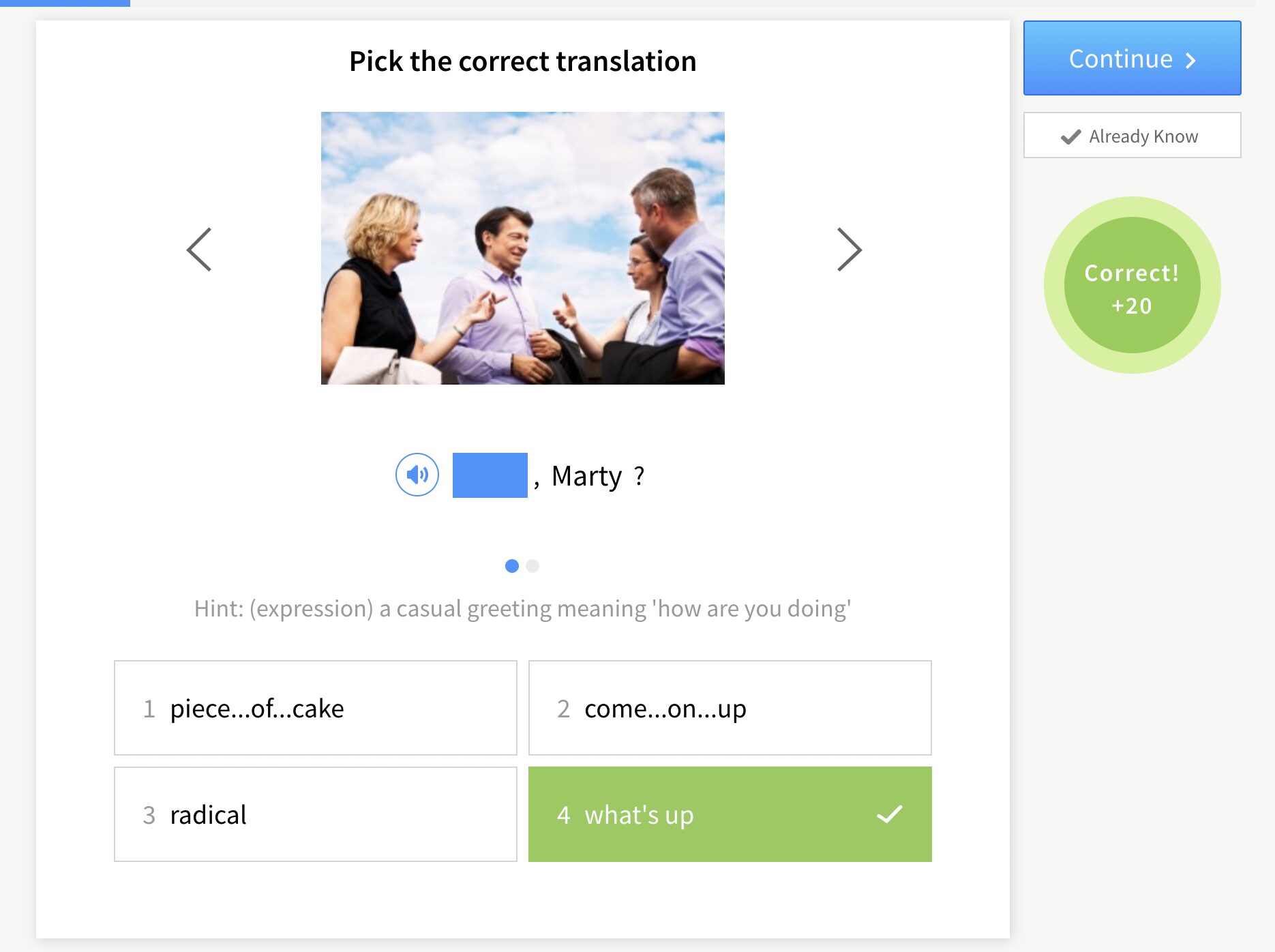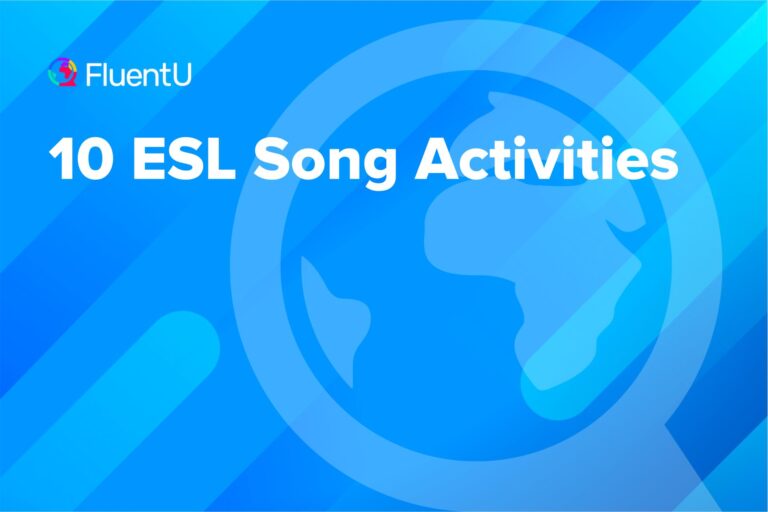ESL Games for Beginners to Build Your Students’ Confidence

If you want to really get your students excited and engaged with the language, it’s all about the games.
Beginner students need to deal with a huge amount of new information. Even the keenest learners will soon reach saturation point. What’s more, adding an immediate, goal-centered approach to the lesson will even have those backseat daydreamers enthusiastically joining in.
Today, we’ll be looking at ideas that, I hope, will give you something new to work with and help you to keep it fresh in the classroom.
Download: This blog post is available as a convenient and portable PDF that you can take anywhere. Click here to get a copy. (Download)
1. Yes/No
This is a great game for practicing the interrogative as well as for helping students to learn a variety of ways to respond to questions.
The rules of this game (explained below) will ensure that your students get creative and come up with diverse answers—repeating answers isn’t allowed! Be careful with teens who may use this game as a cunning ploy to find out who likes who in the class; they really like to grill the student who’s being asked questions! Great fun.
Game play:
- One student goes to the front of the class.
- The other students have to ask him or her questions one at a time with the intention of catching the students at the front out and getting them to say the word “yes” or “no.”
- As the questions begin, so does the stopwatch.
- The student being questioned cannot say these words (“yes” and “no”), repeat a phrase or say anything in their native language. If they do, the timer stops.
- Whoever gets the longest time wins. If you have some talented competitors in your classroom, feel free to set a maximum time limit.
2. Stop the Bus
This game brilliantly tests students on basic vocabulary with a hint of general knowledge keeping things interesting. By tapping into that competitive edge, this game makes students more cautious about spelling than they’d ever be in a simple mid-lesson Q&A between teacher and student.
Game play:
- The students draw a table on a piece of paper with and fill it out with assigned topics, or you could hand out blank tables on worksheets. The topics give the game its general knowledge element. You could ask the students what topics they’d like to explore, or you could choose topics based on what you’ve been studying in class lately.
- Either read these topics out loud or write them on the board to be copied down. Here’s an example of what this topics list might look like: Name | Animal | Country | Food | Movie
- For each round, the teacher writes one letter on the board. The first group, pair or individual to fill out the entire table on their sheet of paper with answers beginning with that letter shouts “stop the bus!” If the answers they’ve written down are correct, then they win the round.
- As an example, with the topics above and the assigned letter as D, a student/group could write, “David | Dog | Denmark | Doughnut | Despicable Me.”
- They’ll be awarded 10 points for every answer that no one else has written, 5 points if others have the same answer, no points if the answer is incorrect.
- This can all be easily adapted. For example, if you’re practicing parts of speech, change the topics to verb, noun, adjective, etc. You can also choose whether to be very strict on spelling or not depending on the class level.
3. Shiritori
Shiritori is a very basic game, of Japanese origin, whose brilliance lies in its simplicity. A literal translation of “shiritori” into English is “taking the buttocks.”
You may choose to teach this particular piece of trivia before you start the game, just no photographic aids, please! Another way to translate it, for those who want to avoid 10-year-old incredulity at the use of the word “buttocks” (oh dear!), is “taking the ends.”
Game play:
- Students go up to the board. The teacher can start by writing one word, and then the students will continue one at a time.
- Each word has to be followed by another one beginning with the last letter of the previous word. Example: Elephant – Tree – Eat
- The game can be made more challenging as the students progress. For example: First row, random vocabulary. Second row, only adjectives. Third row, only verbs. And so on!
4. Pronunciation Whispers
This is a variation of the game also known as “Telephone,” “Gossip” and “Chinese Whispers.” It’s great fun with beginners, although it flies better with classes that aren’t too sensitive about the way they pronounce words in English. It’ll be necessary for you as the teacher to play the role of a judge who’s equal parts harsh and fair.
Game play:
- The class is divided into two teams, each of which has to form a line. You say a different word to each group.
- The students have to whisper the word to the student next to them until the last one has to say the word out loud. If a team pronounces the word correctly, they get a point.
- So all the students get to have a go at this, change the order of the line with each new round. Have the student at the front who’s listening to you say the word, go to the end of the queue and have to say the word out loud next.
- To make the game more challenging, you could write the word down on a piece of paper rather than saying it. A piece of vocabulary you had mentioned earlier in class would be perfect for this, as would words that follow a pronunciation pattern you may have taught in class, such as words ending in -ed.
5. Ring of Fire
A deck of cards is needed for this classroom extravaganza that’s a variety of games rolled into one. Students love this!
This game is great for smaller groups but can be adapted to a larger classroom. It can also be very, very entertaining for the teacher who, aside from corrections and the odd question pointed their way, is largely a spectator.
The game has been adapted from a college drinking game that you might remember as King’s Cup. Rather than having any drinks involved though, for very obvious reasons, each card ultimately results in a student having to answer a question.
Game play:
- Each student has to write down five questions on a piece of paper, cut them up so each question is on a separate piece, then fold the pieces up or scrunch them into balls. The questions are all put in the middle of the ring of cards.
- Each student comes up in turn to pick a card.
- The rule assigned to each card will ultimately determine who has to answer a question. Below is an example of the rules that you can assign to cards. These can be easily tinkered with to customize the game to your classroom’s needs. You can also have students come up with some even sillier rules of their own.
King: Ask anyone. The student who gets a King picks a question out of the pile and asks it to anyone of their choosing.
Queen: Ask a girl. Same as above but the student must ask a girl.
Jack: Ask a boy.
10: Ask the teacher a question! The student who picks out a 10 has to grab a question from the pile and ask the teacher.
9: Bunny ears! All of the students have to put their hands to their heads in the shape of bunny ears. The last to do so answers a question.
8: Words. The students choose a topic. For example, “fruit.” The students go around in turns saying names of fruit. The first one to repeat a word or not be able to think of a fruit within 5 seconds answers a question.
7: Pick again.
6: Touch your nose! This is exactly the same as bunny ears, except students must touch their noses as quickly as possible.
5: Answer one question.
4: Ask the person on your left a question.
3: Ask the person on your right a question.
2: Pick again.
Ace: Ask anyone anything. The student can ask anyone in the classroom anything they want. Yikes!
All of these games are easily adaptable and make for fun, and sometimes hilarious, interactions amongst participants. Really tap into that competitive streak in your classroom, and you may see your students markedly improve in other aspects of English learning as well.
So go on, give your students a break from those verb conjugations and get ready to have an amazingly fun time teaching English!
Download: This blog post is available as a convenient and portable PDF that you can take anywhere. Click here to get a copy. (Download)
And One More Thing…
If you’re like me and prefer learning English on your own time, from the comfort of your smart device, I’ve got something you’ll love.
With FluentU’s Chrome Extension, you can turn any YouTube or Netflix video with subtitles into an interactive language lesson. That means you can learn from real-world content, just as native English speakers actually speak.
You can even import your favorite YouTube videos into your FluentU account. If you’re not sure where to start, check out our curated library of videos that are handpicked for beginners and intermediate learners, as you can see here:
FluentU brings native English videos within reach. With interactive captions, you can hover over any word to see an image, definition, and pronunciation.
Just click on the word to see other example sentences and videos where the word is used in different contexts. Plus, you can add it to your flashcards! For example, if I tap on the word "viral," this is what pops up:
Want to make sure you really remember what you've learned? We’ve got you covered. Practice and reinforce the vocab from each video with learn mode. Swipe to see more examples of the word you’re learning, and play mini-games with our dynamic flashcards.
The best part? FluentU tracks everything you’re learning and uses that to create a personalized experience just for you. You’ll get extra practice with tricky words and even be reminded when it’s time to review—so nothing slips through the cracks.
Start using the FluentU website on your computer or tablet or, better yet, download our from the App Store or Google Play.
Click here to take advantage of our current sale! (Expires at the end of this month.)









